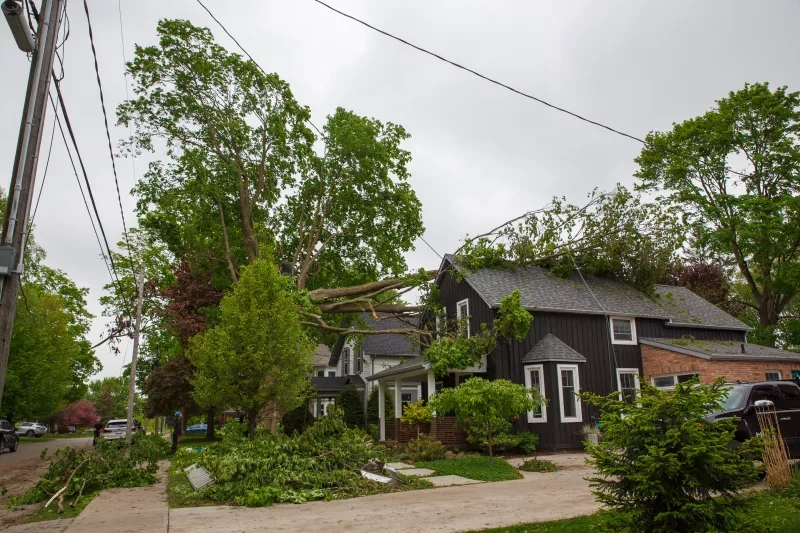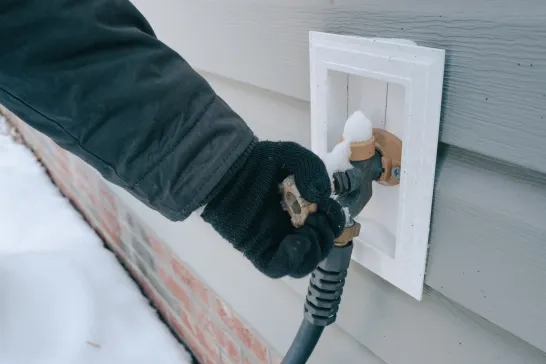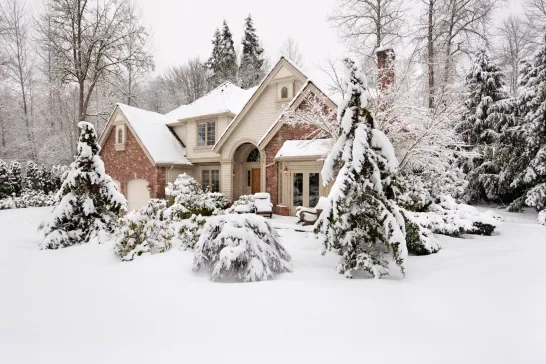
How to protect your home from severe winds in Canada
3 Minute Read
From thunderstorms and tornadoes to hurricanes, extreme winds pose a year-round threat to homes across Canada. However, with proper preparation, you can safeguard your property and prevent expensive repairs.
Here's what you need to know about severe winds in Canada and how to fortify your home before the next storm hits.
Straight-line winds vs. tornadoes
Severe winds come in various forms, each presenting unique challenges. Straight-line winds, commonly produced by powerful weather systems such as thunderstorms, hurricanes, or pressure gradients, move in a direct outward path.
According to Environment and Climate Change Canada (ECCC), a "wind warning" is issued when sustained winds reach 70 km/h or higher, or when gusts exceed 90 km/h, depending on the region.
Tornadoes, on the other hand, involve violently rotating columns of air that cause concentrated and often catastrophic damage. Unlike the consistent force of straight-line winds, tornadoes are unpredictable, capable of uprooting trees, demolishing buildings, and carving erratic or continuous paths of destruction. Their unpredictable nature makes them particularly challenging to anticipate and prepare for.
Tornado activity in Canada
Canada experiences more tornadoes annually than any other country except the United States. Southwestern Ontario and parts of the Prairie provinces are particularly vulnerable due to unique warm, moist air combinations, frequent thunderstorms, and open landscapes.
Most tornado activity occurs between April and September, peaking in June and July. However, tornadoes are not limited to these months and can happen at any time of the year. For instance, 2024 marked Canada's longest tornado season on record, with 129 confirmed tornadoes occurring over a staggering 240 days.
The Fujita (F) scale measures tornado intensity based on wind speed and the damage caused. Here’s a quick breakdown of tornado frequency by category in Canada, according to Public Safety Canada:
-
F-0 (64–116 km/h): Light damage – 45%
-
F-1 (117–180 km/h): Moderate damage – 29%
-
F-2 (181–253 km/h): Considerable damage – 21%
-
F-3 (254–331 km/h): Severe damage – 4%
-
F-4 (332–418 km/h): Devastating damage – 1%
-
F-5 (419–512 km/h): Catastrophic devastation – Only one recorded in Canada, in Elie, Manitoba, in 2007.
How to protect your home against wind damage
While we can’t control the weather, we can prepare for it. Take these proactive steps to significantly reduce the risk of wind-related damage and disruption to your home.
Fortify your roof
Your roof serves as your home’s first line of defence against powerful winds, making it crucial to take proactive measures to minimize the risk of damage. Start by choosing shingles and roofing materials specifically designed to withstand high winds. Bracing can further reinforce the roof’s structure, reducing the likelihood of it being lifted during intense storms.
Routine inspections and maintenance are equally important, as they help identify and resolve potential weak points before severe weather strikes.
Secure windows and doors
Windows and doors are often a home's weakest points during windstorms, making their protection essential. Installing impact-resistant windows or storm shutters significantly strengthens your home’s defences.
For entryways, pressure-rated doors with robust hinges and deadbolts provide an added layer of security. Similarly, reinforcing double doors and sliding glass doors with heavy-duty bolts or slide locks further minimizes the risk of damage during severe weather.
Strengthen porches and overhangs
Porches, awnings, and other overhangs should be securely anchored to the home's main structure. Proper reinforcement prevents these elements from turning into debris during wind events, protecting your property and neighbouring areas.
Anchor outdoor structures and items
In high winds, outdoor furniture, sheds, and other unsecured structures can become hazardous projectiles. To reduce risks, firmly anchor items like patio furniture, barbeques, and HVAC units to the ground.
Reinforcing your garage doors is crucial for protecting your home during severe weather. Ensure they are pressure-rated to endure high winds and securely fastened to prevent buckling. A properly reinforced garage door can act as a barrier, safeguarding your home from strong winds, flying debris, and potential water damage.
This advice is intended to provide general information only and is not intended to provide legal or professional advice, or to be relied on in any dispute, claim, action, demand or proceeding. CAA Insurance Company or ICLR do not accept liability for any damage or injury resulting from reliance on this information.




